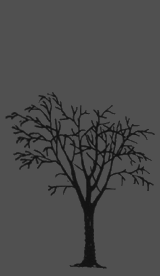About Wood|Species

Cherry
The cherry is the fruit many plants of the genus Prunus produce, and is a fleshy stone fruit commonly called a drupe. The cherry fruits sold commercially are obtained from a limited number of species. The native range of wild cherry in antiquity extends through most of Europe, western Asia and parts of northern Africa, and the fruit has been consumed since prehistoric times. The first record of a cultivated cherry is dated from 72 BCE and was originally brought to Rome from modern day Turkey, today’s top commercial cherry producer.
Prunus serotina Domestic Cherry
Also known as American Cherry or Black Cherry, this tree has a wide distribution from Nova Scotia through Quebec and down into Eastern Texas and central Florida. Several geographic varieties occur in Texas, New Mexico and Arizona, as well as central Mexico and Guatemala. During its lifespan of approximately 200 years, the average height of the Cherry tree is 60 to 80 ft reaching 120 ft (36m) at its tallest, with a trunk diameter of 3 to 5 ft (1-2m). Generally it grows forming a single straight trunk, in a forest setting supporting a narrow oval crown, while in the open its trunk is shorter and broader supporting a crown wider and more irregular.
The fruit of the cherry has been used since colonial times for preserves, jellies, wine and baked goods. Pioneers flavored rum and brandy with it also. Colonists and indigenous peoples depended on other parts of this tree for a variety of uses. The young bark was often stripped and used in the production of cough remedies to treat bronchitis, and in the production of tonics and sedatives as well. The US is currently second top producing nation for commercially sold cherries in the world, producing 391 metric tons annually.
Like all fruit trees, cherry belongs to the rose family and this particular species of deciduous tree is of the subgenus Padus. The leaves are elliptical and grow to 5 in (13 cm) in length and 2 in (5 cm) wide, with pointed tip and fine, incurved blunt-pointed teeth. One or two deep red glands grow at the base of the blade on the leafstalk. The leaves are glossy green, with persistent hairs along the mid-rib, becoming yellow to yellow-red in autumn. Well after the leaves begin to emerge the flowers are borne in racemes-sprouting many-flowered clusters along a dropping stem in late spring. The flowers are small, with five white petals and about 20 stamens, approximately 40 flowers growing on each raceme. The species name serotina, means “late,” and refers to this tree flowering later in the season than many other cherry species.
A pioneer species in the Midwest, it is often seen growing mostly in old fields with other sunlight-loving species, such as Black Walnut, Black Locust, and Hackberry. It occurs as scattered individuals mixed with a variety of other hardwoods throughout its range, preferring moist, well-drained, slightly acidic soils out of river and stream floodplains. The root system of Black Cherry is shallow and wide spreading. Like apricots, the seeds of this cherry contain compounds that can be converted into cyanide with the right enzymes present. The foliage is also poisonous if eaten, particularly when wilted, as it contains compounds that convert to hydrogen cyanide when ingested and is a leading cause of livestock illness. Interestingly, while the foliage and seed contain the enzymes necessary for this conversion, the flesh does not and so it is safe to eat.
Domestic Cherry is an economically important hardwood; with commercially important stands largely restricted to the Allegheny Plateau of Pennsylvania, New York and West Virginia. The heartwood of the Cherry is light pinkish brown when freshly cut and varies from rich red to reddish brown as it darkens with exposure to light and patina from aging. Contrastingly, the sapwood is creamy white. Wood has a fine uniform, straight grain, satiny, smooth texture, and may naturally contain brown pith flecks and small gum pockets. The heartwood is also rated as being very durable and resistant to decay. Known for being one of the best all-around woods for workability Cherry is stable, machines well and has a decent strength-to-weight ratio.

 For best viewing experience please change your device orientation to landscape
For best viewing experience please change your device orientation to landscape